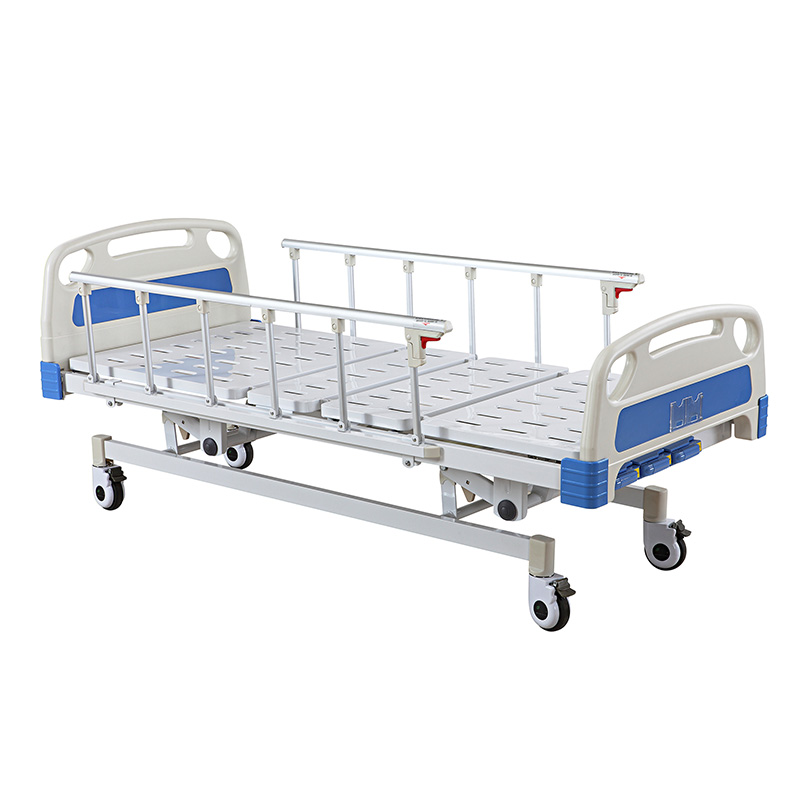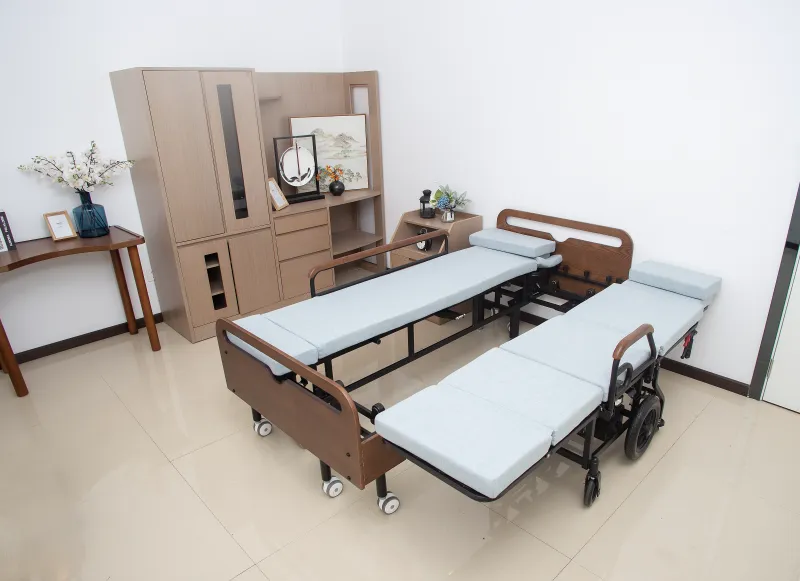
What is the difference between a hospital bed and an ordinary bed?
2024-07-03 15:30
There are obvious differences between hospital patient beds and ordinary beds in design, function and purpose, which directly affect the quality and effect of medical care. This article will discuss the difference between hospital patient beds and ordinary beds, and deeply analyze their respective characteristics and applicable scenarios.

What is the difference between a hospital bed and an ordinary bed?
The difference between a hospital patient bed and an ordinary bed lies mainly in design, function and purpose. Hospital patient beds usually have professional designs, equipped with electric adjustment, safety guardrails and other functions to meet the needs of medical care, and are suitable for professional medical institutions such as hospitals. Ordinary beds have relatively simple functions and are often used in homes or non-medical institutions, mainly for short-term rest or temporary treatment.
Hospital patient beds are more durable and stable, and can provide more professional medical care, while ordinary beds are more used for daily rest or non-professional medical places.
What is the difference between the design and function of hospital beds and ordinary beds?
The design and function of hospital patient beds are usually more complex and professional. They are carefully designed and equipped with various advanced functions such as electric adjustment, safety guardrails, pneumatic mattresses, etc. to meet various medical care needs in hospital environments. Ordinary beds are relatively simple in design and have fewer functions. They usually only have basic bed frames and mattresses and are used in homes or temporary resting places.
The electric adjustment function of hospital patient beds can adjust the bed height, angle, etc. according to the needs of patients to provide a more comfortable sleeping and resting experience. Safety guardrails can effectively prevent patients from falling and ensure their safety. Ordinary beds usually lack these functions, so they are less applicable in medical care.
What are the differences in the uses and applicable scenarios of hospital beds and ordinary beds?
Hospital patient beds are mainly used in professional medical institutions such as hospitals for long-term hospitalized patients or patients who need professional medical care. Due to its stability and professionalism, hospital patient beds can provide high-quality medical care services to meet the various needs of patients.
Ordinary beds are mainly used in homes or non-professional medical places, usually for short-term rest or temporary treatment. Although ordinary beds have simpler functions, they have certain convenience and practicality in home care and temporary treatment.

How does the design and function of hospital beds meet the needs of medical care?
The design and function of hospital patient beds are designed to meet the various needs of medical care and provide patients with a safe, comfortable and effective treatment environment.
1. Integration of professional medical equipment:
Hospital patient beds are usually equipped with interfaces and brackets for various professional medical equipment, such as ventilators, infusion stands, monitoring instruments, etc. The integration of these devices enables medical staff to provide timely monitoring and treatment for patients at the bedside, ensuring that patients receive the best medical care.
2. Design for comfort and safety:
The design of hospital patient beds focuses on comfort and safety, and the mattress material and structure are carefully designed to reduce discomfort and skin damage when patients lie in bed for a long time. At the same time, the bedside is equipped with safety guardrails and side fixings to prevent patients from accidentally slipping or falling, ensuring the safety of patients in bed.
What are the applications and advantages of ordinary beds in home environments?
Ordinary beds have certain applications and advantages in home environments, providing patients with a comfortable and convenient rehabilitation and nursing environment.
1. Convenience of home care:
The simplified design and functions of ordinary beds make them easier to use and maintain in home environments. Family members can easily adjust the position and height of the bed according to the needs of the patient, providing more personalized and caring nursing services.
2. Short-term rest and treatment:
Ordinary beds are mainly used for short-term rest or temporary treatment, and are suitable for common colds, minor injuries, etc. They provide patients with a comfortable rest environment, treatment and short-term rest and treatment in the warm atmosphere of the family.
3. Implementation of personalized care:
In a home environment, patients can enjoy more personalized and caring care. Family members can provide customized care plans according to the needs and preferences of patients, such as taking care of diet, providing emotional support, etc., so that patients can feel more care and warmth.
4. Reduce the occupation of medical resources:
Transferring some short-term rest and treatment situations to the home environment will help reduce the burden on hospitals and clinics, release medical resources, and allow more patients to receive timely medical services. At the same time, it also reduces the risk of infection that patients may face due to hospitalization.
Summary
There are obvious differences in design, function and use between hospital beds and ordinary beds. Hospital patient beds are more professional, stable and durable, suitable for professional medical institutions, while ordinary beds are more suitable for home or non-professional medical places. Understanding these differences will help choose suitable beds and improve the effect and quality of medical care.








